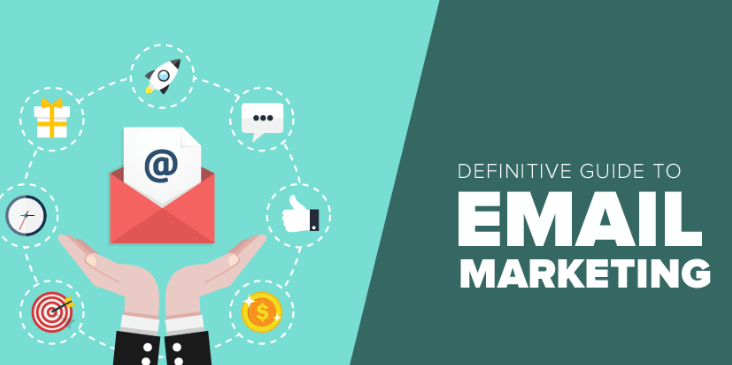What is Email Marketing?

Email marketing remains one of the most effective digital marketing strategies, offering unparalleled reach and ROI. It’s a powerful tool for businesses of all sizes to communicate directly with their audience, nurture leads, and drive conversions. In this SEO-optimized article, we delve into what email marketing is, its benefits, and best practices to help you leverage this channel effectively.
Understanding Email Marketing
Email marketing is the process of sending targeted messages through email to a group of people, with the aim of promoting products, services, or content. It involves building a list of subscribers who have expressed interest in receiving communication from you, and then using emails to engage with them at various stages of the customer journey.
The Benefits of Email Marketing
- High Return on Investment: According to the Direct Marketing Association, email marketing on average sees a 4200% ROI, making it one of the most cost-effective marketing channels.
- Direct Communication: Email allows you to reach your audience directly in their inbox, without the need for them to visit your website or social media pages.
- Personalization and Segmentation: With email marketing, you can personalize messages based on the recipient’s behavior, preferences, and demographics. Segmentation allows for more targeted and relevant communication, increasing engagement and conversions.
- Measurable Results: Email marketing platforms provide detailed insights into your campaigns, including open rates, click-through rates, and conversions, enabling you to measure success and optimize future campaigns.
Best Practices for Email Marketing
- Build Your List Ethically: Focus on growing your email list organically by offering value in exchange for email addresses. Ensure compliance with laws like GDPR by obtaining consent to send emails.
- Craft Compelling Content: Provide content that is relevant, valuable, and engaging to your audience. This could range from informative newsletters to exclusive offers and product updates.
- Optimize for Mobile: With the increasing use of mobile devices to check emails, ensure your emails are mobile-friendly, with responsive design and concise content.
- Test and Refine: Regularly test different aspects of your email campaigns, such as subject lines, content formats, and sending times. Use the insights gained to refine and improve your strategy.
The Future of Email Marketing
As digital marketing evolves, email marketing continues to adapt, incorporating advancements in AI and machine learning for better personalization and automation. Interactive email content, enhanced privacy practices, and integration with other marketing channels signify the ongoing evolution of email marketing. Keeping up with these trends and adopting best practices will ensure that your email marketing strategy remains effective and continues to drive results.
Email marketing stands as a testament to the power of direct communication in the digital age. By understanding what email marketing entails, recognizing its benefits, and applying best practices, businesses can leverage this channel to foster meaningful connections with their audience, nurture leads, and boost their bottom line.
For a deeper dive into maximizing your email marketing efforts and staying abreast of the latest trends, consider exploring resources from established platforms like HubSpot, Campaign Monitor, or Mailchimp. These platforms offer extensive guides, case studies, and tools to enhance your email marketing strategy, ensuring your campaigns resonate with your audience and achieve your business goals.
See also: Soujiyi
Frequently Asked Questions About Email Marketing
Q1. Is Email Marketing Still Effective in 2024?
Yes, email marketing remains highly effective in 2024. With advancements in personalization, automation, and integration with AI technologies, email marketing continues to offer significant ROI for businesses willing to invest in building strong relationships with their audience.
Q2. How Can I Grow My Email Marketing List?
Growing your email list involves providing value and making it easy for potential subscribers to sign up. Consider using lead magnets, such as free ebooks, webinars, or discount codes, as incentives for signing up. Also, ensure that your sign-up forms are visible across your website and social media platforms.
Q3. What’s the Best Time to Send Marketing Emails?
The best time to send marketing emails can vary based on your audience’s behavior and preferences. However, general trends suggest mid-week days, particularly Tuesday through Thursday, during morning hours, see higher engagement rates. It’s essential to test different times to find what works best for your specific audience.
Q4. How Often Should I Send Marketing Emails?
Frequency should be based on your content strategy and the preferences of your audience. A good starting point is once a week, but you can adjust this based on engagement rates and subscriber feedback. The key is to maintain consistency without overwhelming your subscribers.
Q5. Can I Do Email Marketing Without a Website?
Yes, you can start email marketing without a website by using social media, partnerships with other businesses, or offline methods to collect email addresses. However, having a website can significantly enhance your ability to grow your list and provide more value through integrated content and offers.
Q6. How Do I Ensure My Emails Don’t End Up in Spam?
To avoid the spam folder, ensure your emails are compliant with email marketing laws, like the CAN-SPAM Act. Use a reputable email service provider, avoid spammy words in your subject lines, and maintain a healthy sender reputation by regularly cleaning your email list of inactive subscribers.
Q7. What is A/B Testing in Email Marketing?
A/B testing, also known as split testing, involves sending two slightly different versions of an email to a segment of your audience to see which version performs better. This can include changes to the subject line, content, images, or call-to-action buttons. A/B testing helps optimize your email campaigns for higher engagement and conversion rates.




